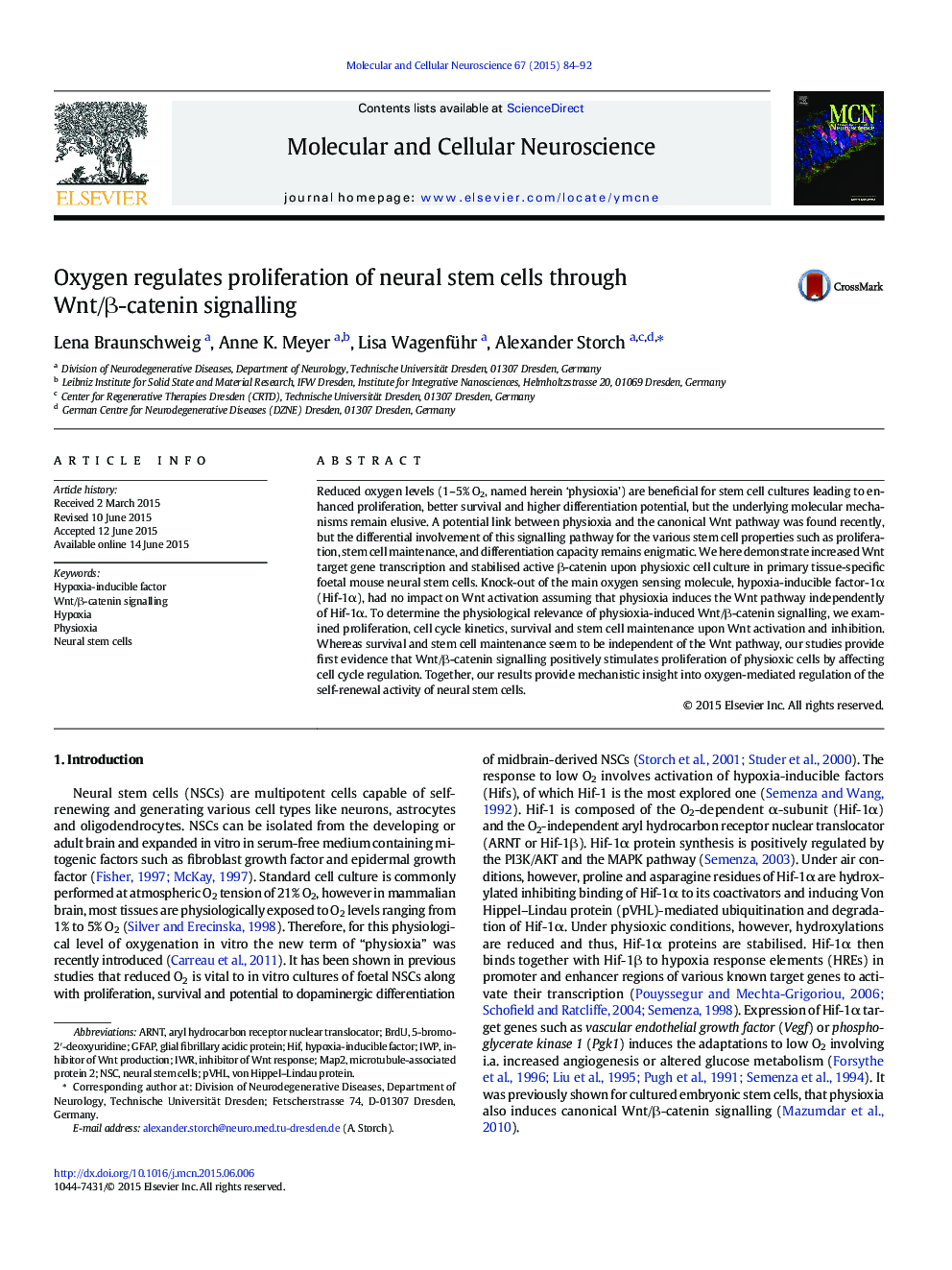| Article ID | Journal | Published Year | Pages | File Type |
|---|---|---|---|---|
| 8478560 | Molecular and Cellular Neuroscience | 2015 | 9 Pages |
Abstract
Reduced oxygen levels (1-5% O2, named herein 'physioxia') are beneficial for stem cell cultures leading to enhanced proliferation, better survival and higher differentiation potential, but the underlying molecular mechanisms remain elusive. A potential link between physioxia and the canonical Wnt pathway was found recently, but the differential involvement of this signalling pathway for the various stem cell properties such as proliferation, stem cell maintenance, and differentiation capacity remains enigmatic. We here demonstrate increased Wnt target gene transcription and stabilised active β-catenin upon physioxic cell culture in primary tissue-specific foetal mouse neural stem cells. Knock-out of the main oxygen sensing molecule, hypoxia-inducible factor-1α (Hif-1α), had no impact on Wnt activation assuming that physioxia induces the Wnt pathway independently of Hif-1α. To determine the physiological relevance of physioxia-induced Wnt/β-catenin signalling, we examined proliferation, cell cycle kinetics, survival and stem cell maintenance upon Wnt activation and inhibition. Whereas survival and stem cell maintenance seem to be independent of the Wnt pathway, our studies provide first evidence that Wnt/β-catenin signalling positively stimulates proliferation of physioxic cells by affecting cell cycle regulation. Together, our results provide mechanistic insight into oxygen-mediated regulation of the self-renewal activity of neural stem cells.
Keywords
Related Topics
Life Sciences
Biochemistry, Genetics and Molecular Biology
Cell Biology
Authors
Lena Braunschweig, Anne K. Meyer, Lisa Wagenführ, Alexander Storch,
